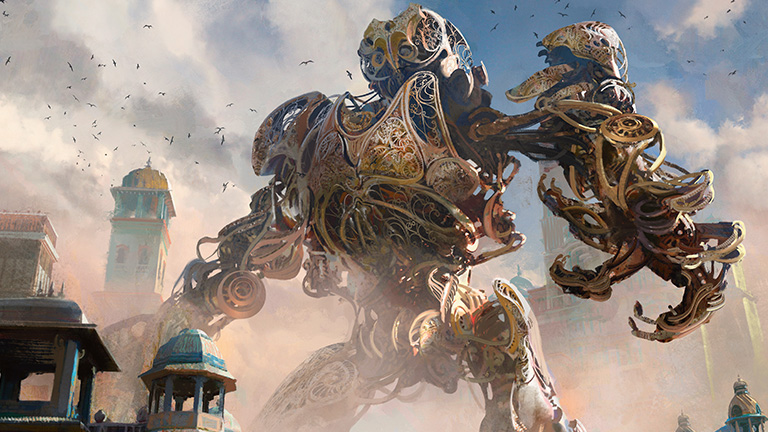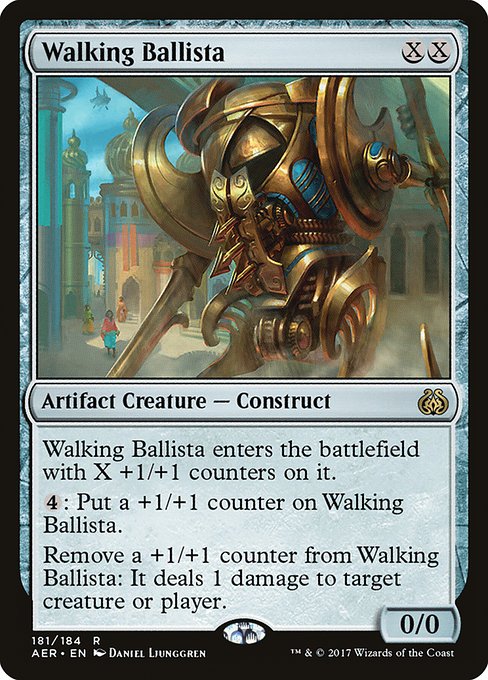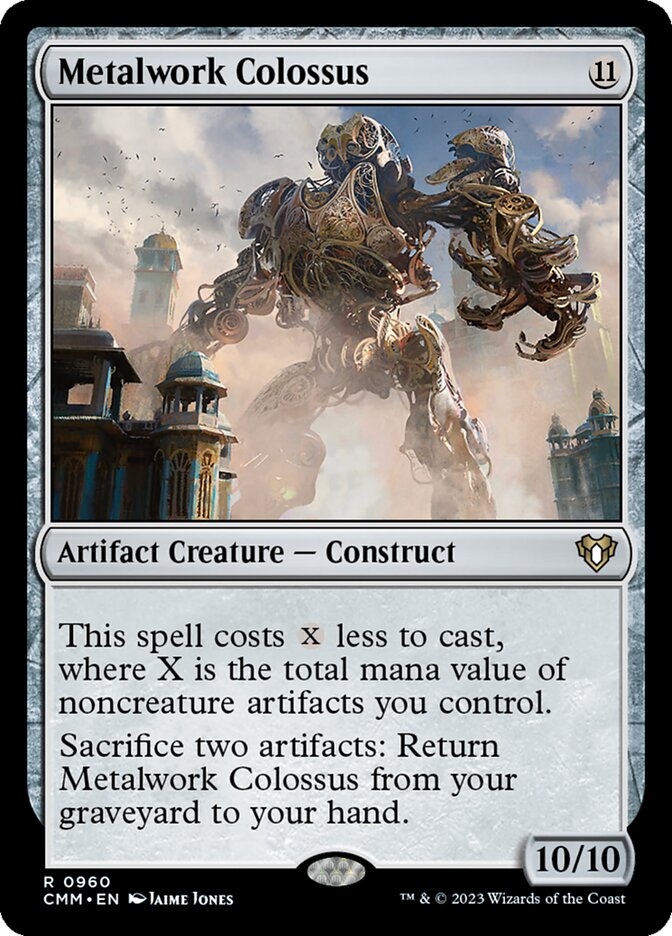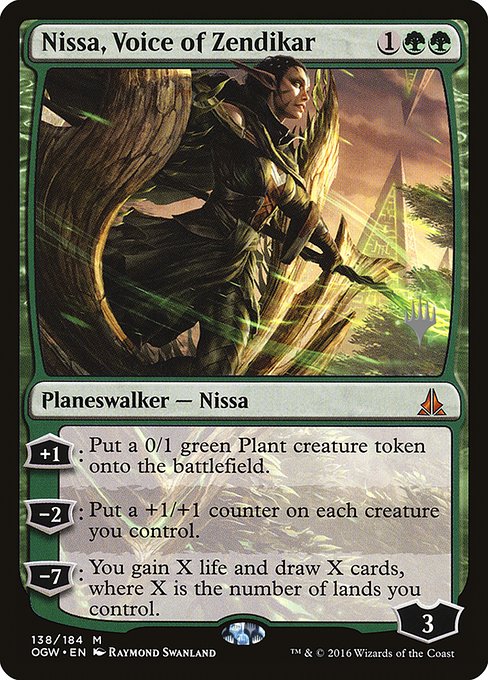Are you a Quiet Speculation member?
If not, now is a perfect time to join up! Our powerful tools, breaking-news analysis, and exclusive Discord channel will make sure you stay up to date and ahead of the curve.
Well done, Wizards. I must confess I showed interest in a Standard format for the first time in over a year. And it wasn’t even strictly financial gains that motivated my desire to watch Star City Games Open coverage in Columbus. I was genuinely curious to see how the format would unfold post-bannings.
I suspect others felt the same way. Therefore I will make the bold claim that Wizards’ new banning schedule will be a boon for Magic because it will allow for another “refresh” cycle. As long as they don’t abuse this power, I firmly believe banning things is a great way to keep players brewing, pros testing, and people speculating. Financially speaking, as long as we avoid the banned cards we should have more opportunities to profit from Standard going forward.
Coming from someone who usually doesn’t touch Standard with a ten-foot pole, this means quite a bit. And it is why I actually made a couple small purchases last weekend.
While the ship has sailed on these two rares already, it doesn’t mean profitable opportunities are gone. However if you do plan on betting on Standard, the best chances for profit are nearly gone. Consider this your two-minute warning.
Innovations
Usually the first couple Standard events after a new set’s release showcase some innovation. A while back we saw the rise of the Rally the Ancestors deck during an SCG Open right before the Pro Tour. This was an example where some of the best innovation was already discovered.
It doesn’t always work out this way though. Sometimes we see generic, aggressive decks in a new Standard during the first couple tournaments. I will always remember how hot Contested War Zone was on the weekend of Mirrodin Besieged’s release. Not only did I get beat by the aggressive deck, but I also got burnt trading for a couple copies on the floor. I don’t think they ever touched that $5 price point again.
So let’s look at this weekend’s popular decks in Columbus. We saw a tremendous amount of Saheeli decks. To me, this isn’t really “innovation”—everyone expected this deck to show up in full force at the Open, and many players built their decks around the ability to beat this combo.
In my opinion, the real innovation came in the form of the BG Aggro deck that married Walking Ballista, one of my Aether Revolt favorites, with Winding Constrictor. In fact Walking Ballista synergizes well with numerous cards in Standard, including Nissa, Voice of Zendikar and Verdurous Gearhulk. These two green cards showed modest jumps recently, but both are a far cry from their all-time highs.
I also found some control decks pretty interesting. I have always been a fan of draw-go strategies in Standard (although it makes for poor live coverage), and the decks based around Torrential Gearhulk and Wandering Fumarole as win conditions look pretty fun to me. I suspect these decks can be refined based on local metagames to be very competitive going forward.
It was also really exciting to see the Metalwork Colossus deck from PT Kaldesh resurface---perhaps the bannings helped make this strategy viable again. When was the last time 10/10 creatures were playable in Standard? The deck certainly is a delight for Timmy players everywhere.
Place Your Bets
Despite the fact that we did see some creative deck strategies in Columbus, I will go out on a limb and state that the innovation for the new Standard format isn’t finished. There were quite a few Saheeli Cat decks, and this came as no surprise. I think this deck can be beat once people have enough time to test. Enter the Pro Tour.
Historically, the Pro Tour has been one of the best opportunities to make money from MTG speculation. It is during the Pro Tour that we see numerous price spikes as players buy up cards they see in action on camera. Sometimes there are fewer spikes and sometimes the spikes are more plentiful; for Aether Revolt, I believe the bannings have created enough wide-open development space to enable multiple new strategies to surface. For this reason, I think the best chance to profit from Standard comes in two weeks.
What does this mean? It means you have about one week to place your final bets on the format. Do you think the Saheeli deck is going to be the only cat in town? You may do well to pick up some Inspiring Vantages or Spirebluff Canals. (I can’t advocate buying Saheeli Rai herself because she’s already so expensive). Do you feel Baral, Chief of Compliance didn’t get a fair showing? Now’s the time to be picking these up. Will green-white strategies dominate the Pro Tour? Perhaps Oath of Ajani and Ajani Unyielding should be in your binder before the main event.
My point is, in order to maximize profits from the Pro Tour you need to follow a straight-forward yet difficult two-step process:
- Purchase cards you think will break out during the Pro Tour at least one week before the main event.
- Sell cards Pro Tour weekend once they spike.
This is what I mean when I say “place your bets.” The time to speculate on Standard is now—Wizards of the Coast gave us speculators a gift when they banned cards in Standard. It caused a massive upheaval of the metagame, and players will need to adjust accordingly. During this period of uncertainty, prices are going to be extremely volatile, allowing us to profit handily if we are betting on the right spots. This shake-up will hit its peak during the Pro Tour.
After that event, the new format will be more defined and start to settle out. You have two weeks before that happens. Given that it takes about a week for cards to arrive in the mail, you have about one week to make your purchases in advance of the Pro Tour. Use the time wisely.
Can’t I Buy During the Pro Tour?
Of course you can. It’ll just mean you end up paying higher prices to build your position. What’s more, you also run the risk of your card crashing in price if the deck just misses the Top 8. This happened with Demonic Pact during Pro Tour Origins. The card spiked on Friday and Saturday, but when the deck failed to make Top 8 it quickly sold off in the days that followed. If you had bought into the spike—even before it reached its peak—you may not have had enough time to sell for realizable gains.
It is trivial, but the fact that it is easier to sell into a pop than it is to sell into a race to the bottom needs to be stated. Emotions often get the best of us, and it causes us to make suboptimal financial decisions.
When we chase a spike, we fall into the trap of expecting the card to rise higher and higher. But it’s impossible to predict the exact peak and the exact duration of that peak. So while it’s certainly possible to buy cards on Pro Tour weekend to sell for profit, it’s definitely easier to do so when you already have the cards in hand.
Wrapping It Up
You may ask what my bets are for Pro Tour Aether Revolt. This is where I come up short as a Standard speculator. I simply do not know enough about the format to offer up actionable suggestions. I would just be guessing.
However, I can offer some advice: follow key players on Twitter to see what they’re talking about. Read up on other MTG finance articles—there are multiple writers on this site who know much more about Standard than I do. Read up on tournament results on MTGO over the next week. Gather as much data as possible so you can make informed bets on the Pro Tour.
As for me, I’m probably going to leverage my typical Pro Tour strategy: buy cards on Friday as soon as they show up on camera and hope to get the cards in the mail soon enough to sell for profit. This isn’t the best approach to make profits, but it can be an effective way to make a few bucks while not being good at predicting what the metagame will look like. It’s basically the way to play the Pro Tour for people who don’t know enough about Standard to make bets in advance.
In the meantime, I’ve been focusing my resources on Commander and Old School cards. No matter how interesting Standard becomes, I will always prioritize investing in Commander and Old School because I like the long-term prospects for growth. Standard is fine for making a quick buck, but the real appreciative growth happens in casual and fan-supported formats.
For those who crave specific ideas, I really like Garruk, Apex Predator right now.
This card buylists for nearly $10, but occasional copies are listed on eBay in the $9-$10 range. To me this is one of the safest pickups—the card isn’t likely to be reprinted in Modern Masters 2017 and it still sees significant play in Atraxa Commander decks. If you prefer penny stock ideas, check out the chart on Thopter Assembly: does it get much more attractive than this? I am in for a few playsets on this one.
Standard bannings are a nice distraction to keep me interested in MTG finance, but nothing trumps a solid buy-and-hold strategy. Combining the two, however, is truly the best of both worlds. We can make a few bucks on Standard metagame shifts and hype while reinvesting profits into long-term holds. This is my favorite strategy of all, and it’s exactly why I am more bullish on MTG now than I was throughout all of 2016. Let’s hope that momentum continues!
…
Sigbits
- Lotus Bloom is hitting all time highs and the card is completely sold out on Star City’s website. It’s listed at $9.99 but it wouldn’t surprise me to see a modest bump higher when it comes back in stock. This hype is probably driven by Modern speculation surrounding the new tools Eggs is getting in AER like Whir of Invention.
- Keep an eye on Collector's Edition and International Edition cards. I know they’re not tournament-legal and therefore are boring to some, but they have been creeping higher, likely from Old School demand. Just this weekend we saw Bayou, Illusionary Mask, Savannah, Tundra, Cyclopean Tomb and Nevinyrral's Disk from CE each hit all-time highs. I believe there is genuinely traction here, and I know Star City Games has been aggressive with their CE/IE buylists for quite some time now.
- Here’s some low-hanging fruit for patient readers. Check out the price chart on Heartwood Storyteller. The card just hit an all-time high, and the chart shows a real inflection point taking place over recent weeks. This will surely climb higher—if you’re looking for an easy entry point, I see SCG has seven SP copies in stock well below TCG pricing, at $3.39. My only request is that if you buy those copies, post it in the comments so everyone else knows they’re gone. And if you miss out, don’t worry, it looks like copies are cheaper on eBay than TCG Player so there’s still some room to buy in cheaply.













Great article, thanks for your insight Sig! It’s interesting that you brought up the CE and IE cards because I’ve been thinking about them a lot lately… as an old school player, is there any stigma in playing these in 93-94? (Can people even tell when they’re sleeved up?) Do you think investing in a set of CE power is a good long term play based on the growing popularity of old school?
Garruk is from M15 it can`t be in MM3.
Oh, I didn’t know where the core set cutoff was. That’s good to know, and makes it even an even better buy! Thanks for the build!
Sig